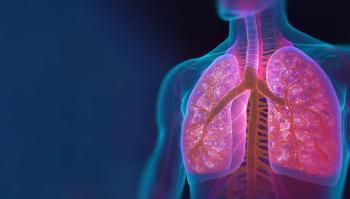
- May 2019 Skin & Eye Health
- Volume 85
- Issue 5
Antifungals Are Key to Fighting Fungal Infections
Pharmacists need to be dermatomycoses detectives at times, recommending biopsies for patients if necessary.
Fungal skin infections (dermatomycoses) are extremely common. Pharmacists tend to see 5 superficial types1-5:
- Onychomycosis, or tinea unguium, which affects nails and often occurs simultaneously with tinea pedi
- Tinea capitis (ringworm of the scalp)
- Tinea corporis (ringworm of the body)
- Tinea cruris (jock itch)
- Tinea pedis (athlete’s foot),1 which infects about 15% of the population at any time and more than 70% of Americans at some point in their lives
These areas of the skin are all dark, moist, and warm and contain keratin, creating a perfect environment for fungus (see figure1-5).2
HOW FUNGI SURVIVE
Fungi obtain nutrients from keratin, colonizing keratin-containing tissues. They create metabolic by-products and cause hosts to mount inflammatory reactions. Unable to penetrate immunocompetent hosts’ viable tissues, fungi usually thrive in the epidermis’ nonliving cornified layer.6
Dermatophytes are transmitted by direct contact with infected hosts or by direct or indirect contact with infected exfoliated hair or skin. Such particles often cling to bathroom or locker room floors, brushes and combs, clothing, furniture, hats, shoes and socks, and towels. Experts recommend avoiding sharing personal items and advise doing laundry in hot water with fungicidal soap after exposure to dermatomycoses. They also recommend wearing protective shoes in locker rooms.7-9
In many cases, clinicians diagnose dermatomycoses after simple visual examination or on the basis of epidemiology and history. Athlete’s foot produces a dull erythema and pronounced scaling, often involving the entire sole and the sides of the feet. In extreme cases, patients develop a moccasinlike inflammation. Ringworm has a circuler presentation, a sharp margin, and raised edges with central clearing. Onychomycosis occurs on the nails and causes color changes and misshapen nails. Dermatologists advise testing scrapings using a potassium hydroxide preparation to ensure a diagnosis because many of these infections can be confused with other diagnoses.1-5
SELECTING A PRODUCT
No treatment algorithm addresses dermatomycoses concisely and thoroughly. In general, patients with mild to moderate disease can use topical antifungals. Most instances of athlete’s foot and ringworm can be treated with OTC topicals. For onychomycosis when more than half the nail is involved, many experts recommend oral terbinafine or itraconazole because each medication has few drug interactions, a high cure rate, and a low incidence of adverse effects.10 Topical treatments alone often fail to penetrate the nail plate sufficiently or cure onychomycosis and should not be used for tinea capitis.7-9
AVAILABLE MEDICATIONS
In the United States, a large selection of OTC and prescription medications crowd the shelves. They fall into 3 general chemical groups: the allylamines, the azoles (imidazoles and triazoles), and the newer echinocandins, with a few other drugs in standalone categories. The table11-13 shows the many available drugs and raises the question, “Which is the best antifungal?” The answer depends on the location of the infection and expectations for cost and efficacy.
CONCLUSION
Patients must be prepared to treat fungal infections for weeks to months and adhere to a treatment regimen religiously. They appreciate convenience and will need to weigh cost against duration of treatment.10,14 Pharmacists should stress that patients who are adherent to treatment but continue to experience dermatomycoses must have their infections biopsied if they were diagnosed visually initially or rebiopsied.
Jeannette Y. Wick, RPh, MBA, FASCP, is an assistant director of the Office of Pharmacy Professional Development at the University of Connecticut School of Pharmacy in Storrs.
REFERENCES
- Gupta S, Agrawal P, Rajawat R, Gupta S. Prevalence of dermatophytic infection and determining sensitivity of diagnostic procedures. Int J Pharm Pharmaceut Sci. 2014;6(3):975-1491.
- de Berker D. Clinical practice. Fungal nail disease. N Engl J Med. 2009;360(2):2108-2116. doi: 10.1056/NEJMcp0804878.
- Nenoff P, Krüger C, Schaller J, Ginter-Hanselmayer G, Schulte-Beerbühl R, Tietz HJ. Mycology - an update part 2: dermatomycoses: clinical picture and diagnostics. J Dtsch Dermatol Ges. 2014;12(9):749-777. doi: 10.1111/ddg.12420.
- Ely JW, Rosenfeld S, Seabury Stone M. Diagnosis and management of tinea infections. Am Fam Physician. 2014;90(14):702-710.
- Rotta I, Otuki MF, Sanches AC, Correr CJ. Efficacy of topical antifungal drugs in different dermatomycoses: a systematic review with meta-analysis. Rev Assoc Med Bras. 2012;58(3):308-318.
- Garg J, Tilak R, Garg A, Prakash P, Gulati AK, Nath G. Rapid detection of dermatophytes from skin and hair. BMC Res Notes. 2009;2:60. doi: 10.1186/1756-0500-2-60.
- CDC. Fungal nail infections. cdc.gov/fungal/nail-infections.html. Updated January 25, 2017. Accessed March 10, 2019.
- CDC. Ringworm risk and prevention. cdc.gov/fungal/diseases/ringworm/risk-prevention.html. Updated August 6, 2018. Accessed March 10, 2019.
- CDC. Treatment for ringworm. Updated August 6, 2018. cdc.gov/fungal/diseases/ringworm/treatment.html. Accessed March 10, 2019.
- Kreijkamp-Kaspers S, Hawke K, Guo L, et al. Oral antifungal medication for toenail onychomycosis. Cochrane Database Syst Rev. 2017;7:CD010031. doi: 10.1002/14651858.CD010031.pub2.
- Gupta AK, Drummond-Main C, Cooper EA, Brintnell W, Piraccini BM, Tosti A. Systematic review of nondermatophyte mold onychomycosis: diagnosis, clinical types, epidemiology, and treatment. J Am Acad Dermatol. 2012;66(3):494-502. doi: 10.1016/j.jaad.2011.02.038.
- Cook-Bolden FE, Lin T. Efinaconazole solution 10% for treatment of toenail onychomycosis in Latino patients. Cutis. 2017;99(4):286-289.
- Elewski BE, Rich P, Pollak R, et al. Efinaconazole 10% solution in the treatment of toenail onychomycosis: Two phase III multicenter, randomized, double-blind studies. J Am Acad Dermatol. 2013;68(4):600-8. doi: 10.1016/j.jaad.2012.10.013.
- Chen X, Jiang X, Yang M, et al. Systemic antifungal therapy for tinea capitis in children: An abridged Cochrane Review. J Am Acad Dermatol. 2017;76(2):368-374. doi: 10.1016/j.jaad.2016.08.061.
Articles in this issue
over 6 years ago
Case Studies (May 2019)over 6 years ago
Vaccines: There Is an App for Thatover 6 years ago
Be Aware of Corresponding Responsibilityover 6 years ago
OTC Case Studies: Skin and Eye Healthover 6 years ago
Generic Products (May 2019)over 6 years ago
Oral Contraceptives Are Susceptible to Several Interactionsover 6 years ago
Medication Synchronization Laws Can Improve Adherenceover 6 years ago
What Factors Are Contributing to Drug Shortages?over 6 years ago
Rx Products (May 2019)Newsletter
Stay informed on drug updates, treatment guidelines, and pharmacy practice trends—subscribe to Pharmacy Times for weekly clinical insights.


























































































































































































































